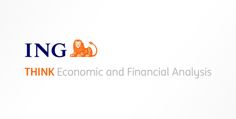Asahi shares mark weekly slide after cyberattack halts production
Unemployment remains near all-time lows as the economy maintains a slow pace of growth amid significant uncertainty. So, despite a small uptick in the unemployment rate, the labour market mainly shows resilience
The unemployment rate increased from 6.2 to 6.3% in August. While an increase in the jobless rate is never a good thing, we’d be hesitant to read too much into today’s number. The increase in the number of unemployed people was 11,000 higher than in July, but still 136,000 lower than in June. That puts this uptick into perspective.
But employment expectations have steadily weakened over recent years, which means that job growth is under pressure. In September, the Employment Expectations Index by the European Commission ticked down to the lowest level since 2021. Manufacturers are becoming less negative about hiring prospects, but the service sector saw solid job prospects falter last month.
And businesses are pushing for productivity gains as wages have increased significantly over recent years. Yet despite all of that, the labour market continues to see unemployment near all-time lows for now.
That said, the job market in the eurozone is also quite divided between the south and north. The south is seeing stronger job growth – especially in the private sector – with more structural declines in unemployment. Weaker economic growth in the north of the eurozone is also reflected in more upward pressure on unemployment. This means that while the average eurozone job market performance is quite strong, weak spots can easily be found right now.
Disclaimer: This publication has been prepared by ING solely for information purposes irrespective of a particular user’s means, financial situation or investment objectives. The information does not constitute investment recommendation, and nor is it investment, legal or tax advice or an offer or solicitation to purchase or sell any financial instrument. Read more
